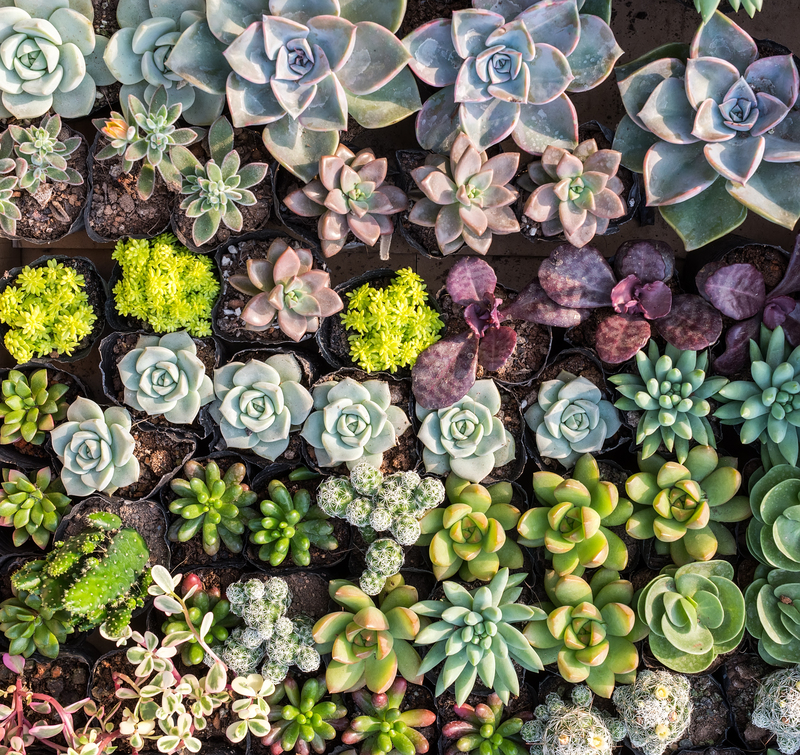Innovative Garden Ideas to Engage and Entertain Children
Posted on 03/09/2025
Innovative Garden Ideas to Engage and Entertain Children
Looking for creative, fun, and productive ways to get your kids involved in the outdoors? With the growing importance of screen-free activities and meaningful family engagement, innovative garden ideas to engage and entertain children are more valuable than ever. Modern family gardens can serve as places of learning, play, and discovery, all while nurturing a love for nature. In this comprehensive guide, explore exciting garden projects, clever layouts, and imaginative activities that transform any green space into a child's wonderland.

Why Gardens are Essential for Children's Development
Introducing children to gardening offers countless benefits beyond simply growing plants. Gardening fosters creativity, enhances fine motor skills, builds patience, and teaches responsibility. Outdoor play in garden settings also contributes to children's physical health and emotional wellbeing. Engaged in the natural world, children develop curiosity and environmental awareness--traits that last a lifetime.
- Boosts creativity through sensory play
- Strengthens family bonds with collaborative projects
- Encourages experimentation and learning
- Promotes healthy eating through growing food
- Offers stress relief and mindfulness practices
The Foundations: Kid-Friendly Garden Design
The first step in creating a garden tailored for young explorers is design. The layout should encourage movement and be compatible with children's safety and natural curiosity. Consider these pivotal elements for a truly engaging space:
- Safe Pathways: Wide, sturdy, and non-slip paths for running, walking, and exploring
- Accessible Beds: Raised garden beds at child-friendly heights
- Edible Zones: Areas for picking fruits, veggies, and herbs
- Sensory Corners: Sections filled with fragrant, textured, or colorful plants
- Shady Retreats: Hideaways with child-sized benches or hammocks under trees
- Interactive Features: Water play, mud kitchens, and artistic installations
1. Miniature Vegetable and Herb Gardens
One of the simplest yet most powerful garden projects for children is a mini vegetable and herb plot. Start with easy-to-grow, fast-sprouting options such as radishes, lettuces, cherry tomatoes, basil, and mint. Pair each plant with bright, illustrated signs and let kids paint their own plant markers.
- *Assign each child their own plot*--it fosters ownership and pride in their gardening journey.
- *Introduce fun shapes*: Grow veggies in spiral beds or rainbow rows for visual excitement.
- *Harvest and snack*: Children love tasting their efforts! Plan for quick-growing varieties to sustain interest.
2. Living Teepees and Tunnels
Transform your backyard with living structures! Construct a magical garden teepee or tunnel using tall, quick-growing plants such as sunflowers, beans, or sweet peas. Not only do these natural hideouts encourage imaginative play, but they also serve as shady cool zones during the summer.
- Use bamboo poles or willow branches for frameworks.
- Invite the children to help weave and train vines as they grow.
- Decorate with wind chimes, fairy lights, or homemade bunting for extra magic.
3. Sensory Gardens for Children
A child-friendly sensory garden stimulates the five senses, offering a rich learning environment. Include a mix of plants and materials that invite touching, smelling, tasting, seeing, and hearing.
- Touch: Lamb's ear, ornamental grasses, and moss patches
- Smell: Lavender, rosemary, and lemon balm
- Taste: Strawberries, nasturtiums, and sugar snap peas
- Sight: Marigolds, sunflowers, and painted stepping stones
- Sound: Bamboo, ornamental grasses, and water features for rustling and trickling
Encourage children to walk barefoot on soft lawns and explore different textures to enhance tactile learning.
4. Garden-Based Art Projects
Spark creativity by turning your garden into an open-air art studio. From nature-inspired crafts to decorating garden elements, art activities intertwine with nature to keep kids joyfully engaged.
- Paint and personalize rocks, flowerpots, or stepping stones.
- Create ephemeral artworks with leaves, sticks, petals, and seeds.
- Build and display "bug hotels" using recycled materials and natural elements.
- Install a DIY weatherproof chalkboard for ongoing garden doodles and games.
Water Play Zones: Splish, Splash, and Learn!
Nothing thrills children quite like water play in the garden! Creating a safe splash zone boosts sensory exploration and provides cooling relief on hot days.
- Mud Kitchens: Set up a simple "mud kitchen" using old utensils, pots, and pans. Children love mixing, pouring, and making mud pies.
- Dinosaur Lagoons: Add a small sand pit and water tray for "dinosaur digs" or beach scenarios.
- Mini Ponds: A shallow, contained pond (with careful adult supervision) attracts wildlife and introduces kids to frog, insect, and plant life cycles.
- Drip Irrigation Play: Teach sustainable water usage by letting kids help install or play with a gentle drip irrigation system.
Always supervise closely around water, and ensure all water features are safe for little ones.
Wildlife-Friendly Gardens: Cultivating Young Naturalists
Invite nature's visitors into your space and raise budding ecologists at home. Children's wildlife gardens offer endless wonders, introduce local species, and foster respect for all creatures.
- Build Birdhouses and Feeders: Paint and hang these together, then track bird species with a family "field notebook."
- Butterfly Hotels and Bee Baths: Use shallow bowls with stones or plant butterfly-attracting flowers for pollinator fun.
- Insect Observation Zones: Turn over logs or keep a "bug box" to observe beetles, worms, and centipedes.
- Log Piles and Hedgehog Houses: Encourage beneficial wildlife by providing shelter.
*Label plants and bug hotels with informational signs--this transforms the garden into a living science lab.*
Seasonal Garden Activities for Year-Round Engagement
Change keeps children interested. With every season, update your garden to offer fresh activities and challenges:
- Spring: Sow quick-sprouting seeds, build fairy gardens, create bug hotels.
- Summer: Set up water zones, harvest and picnic, organize scavenger hunts.
- Autumn: Make leaf art, plant bulbs, collect seeds.
- Winter: Decorate with natural wreaths, feed birds, plan next year's crops with dream boards.
Fairy Gardens and Miniature Worlds
Capture imagination by designing enchanting fairy gardens or pirate coves with children. Use tiny plants, pebbles, small figurines, and craft supplies to create personalized fantasy realms that evolve throughout the year.
Aromatic Herb Mazes and Flower Trails
Lay out a winding path or maze using aromatic herbs or bright flowers. This interactive garden idea stimulates senses while providing an element of adventure.
- Mark the start and end points with playful signs.
- Change plantings seasonally for variety and color.
Learning Experiences: Gardening as Outdoor Education
The garden is a living classroom. Use child-centered garden ideas to support indoor learning and school projects:
- Math: Measure plant growth, count seeds, estimate harvests.
- Science: Observe life cycles, pollination, decomposition, and weather patterns.
- Literacy: Read garden-themed books, write plant care journals, compose nature-inspired poetry.
- Art: Press flowers, make leaf rubbings, or sketch outdoors.
Composting: Observe and Participate in the Magic
Set up a small compost bin or wormery. Show children how food scraps turn into rich soil and let them take charge of turning and watering. This practical activity introduces sustainability and natural cycles in a hands-on way.
Vertical and Container Gardening for Small Spaces
Short on space? Vertical gardens and container projects offer all the magic of outdoor gardening without a large yard.
- Stacked planters, wall-mounted pockets, or hanging baskets for strawberries and trailing flowers
- Colorful pots or repurposed containers for mini herb gardens on patios or balconies
- Upcycled boot or teapot planters for quirky charm

Tips for a Safe and Successful Kids' Garden
- Choose non-toxic plants and avoid any sharp or hazardous materials.
- Use child-sized tools to make participation easy and enjoyable.
- Supervise water features and teach garden safety rules.
- Regularly rotate activities and plantings to sustain interest and learning.
Conclusion: Grow Together, Learn Forever
Adopting innovative garden ideas to engage and entertain children is an investment in happy, healthy, and well-rounded young people. By designing spaces that encourage curiosity, creativity, and responsibility, you help children build essential life skills while nurturing a deep relationship with the natural world. Whether your garden is sprawling or compact, these imaginative suggestions guarantee endless opportunities for joy, learning, and cherished family memories.
Start small, dream big, and watch children's love for gardening--and the outdoors--grow season after season!



